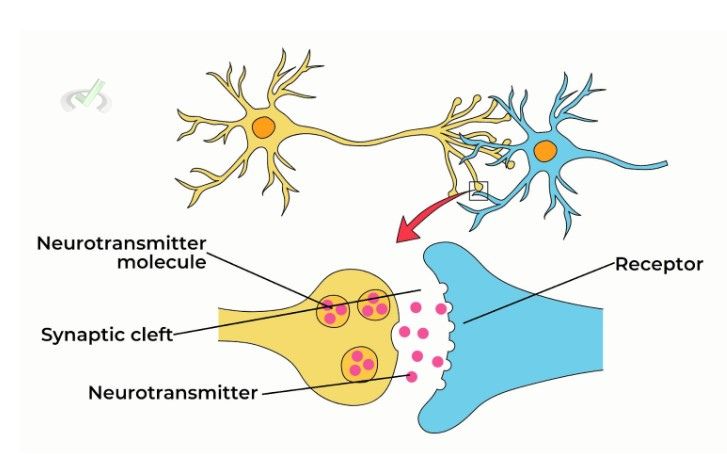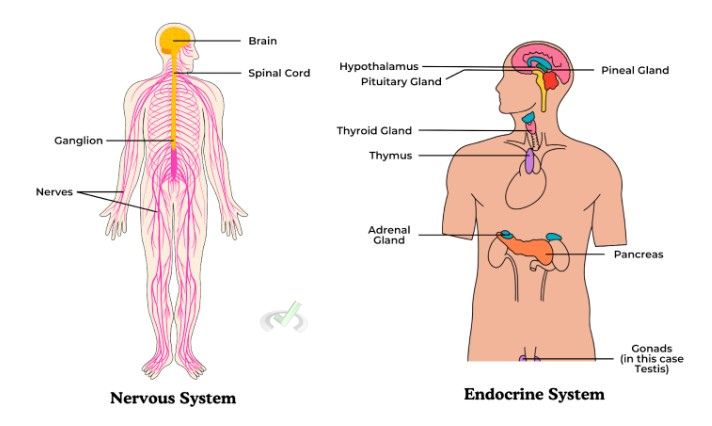Have you ever wondered how you react so quickly to a sudden event, like when you catch a ball thrown at you? This quick reaction happens because neurons communicate in your brain and body.
Neurons are cell that serves as the building blocks of our nervous system and plays a crucial role in our behavior. Let's examine how neurons communicate and how this communication affects our behavior.
I. Understanding Neurons
Neurons are special cells in our nervous system. They send and receive messages throughout the body. These messages help us move, think, and feel.
A. Structure of Neurons
Each neuron has three main parts:
- Cell Body: The central part of the neuron that contains the nucleus. The nucleus controls the cell's activities.
- Dendrites: Branch-like structures that receive messages from other neurons. They pass these messages to the cell body.
- Axon: A long fiber that sends messages from the cell body to other neurons, muscles, or glands.

B. Types of Neurons
Neurons come in three main types:
- Sensory Neurons: Carry messages from sensory organs (like eyes and skin) to the brain and spinal cord. These messages help us sense the world around us.
- Motor Neurons: Send messages from the brain and spinal cord to muscles and glands. This tells them to move or release hormones.
- Interneurons: Connect neurons within the brain and spinal cord. They help neurons talk to each other and process information.
II. How Neurons Communicate
Neurons communicate at junctions called synapses. When a message reaches the end of an axon, it triggers the release of chemicals known as neurotransmitters.

A. Synaptic Transmission
Here's how it works:
- Electrical Signal: A neuron sends an electrical signal down its axon.
- Release of Neurotransmitters: The signal reaches the end of the axon. This causes neurotransmitters to be released.
- Crossing the Synapse: These neurotransmitters cross the synapse. The synapse is the gap between neurons. They attach to receptors on the next neuron.
- Continuing the Signal: The attachment of neurotransmitters to receptors generates a new electrical signal in the receiving neuron.
This precise signaling ensures messages are transmitted accurately throughout the body.
B. Examples of Neurotransmitters
Some key neurotransmitters include:
- Dopamine: Involved in movement, emotion, and the reward system. It's important for feeling pleasure and motivation.
- Serotonin: Affects mood, appetite, and sleep. Low serotonin may lead to depression.
- Acetylcholine: Responsible for muscle action and memory. It helps muscles contract and plays a role in learning and memory.
- Glutamate: The main excitatory neurotransmitter present in the brain. It is important for learning and memory.
- GABA (Gamma-Aminobutyric Acid): The main inhibitory neurotransmitter found in the brain. It helps calm the nervous system.
- Norepinephrine: Involved in alertness and the body's response to stress. It increases heart rate and blood flow to muscles.
III. The Role of Neuronal Communication in Behavior
Neuronal communication is vital for all aspects of behavior. Let's explore a few examples:
A. Reflex Actions
A reflex action is a quick, automatic response to a stimulus. For example, sensory neurons send a message to the spinal cord when you touch something hot.
Interneurons in the spinal cord immediately send a message back through motor neurons to your muscles. This causes you to pull your hand away. This happens without involving the brain, allowing for a very fast response.
B. Learning and Memory
Learning involves creating and strengthening connections between neurons. Your brain forms new synapses when you learn something new, such as a dance move.
It also strengthens existing ones, a process called synaptic plasticity. Over time, repeated practice strengthens these connections, making the movements more natural and easier to recall.
C. Emotions and Mood
Neurotransmitters like serotonin and dopamine regulate mood and emotions. The amygdala, part of the brain's limbic system, is involved in emotion processing. Meanwhile, the prefrontal cortex helps regulate emotions and decision-making.
As mentioned, low serotonin is linked to depression. Also, the imbalances in dopamine can affect emotions and reward-related behaviors. Understanding these connections helps us see how neuronal communication impacts mental health.
IV. Disorders Related to Neuronal Communication
Disruptions in neuronal communication can lead to various disorders. Here are some examples:
A. Alzheimer's Disease
This is a progressive brain disease that affects memory and cognitive function. It is caused by the death of neurons and the breakdown of synaptic communication.
Beta-amyloid plaques and tau tangles build up in the brain and disrupt neuronal communication. This leads to cell death.
B. Parkinson's Disease
This disorder affects movement and coordination. It is linked to the loss of dopamine-producing neurons in the substantia nigra in the brain.
Symptoms may include tremors, stiffness, and difficulty with balance and coordination. Treatments like L-DOPA help increase dopamine levels and manage symptoms.
C. Multiple Sclerosis
In this disease, the immune system attacks the protective covering of neurons called myelin. In turn, it disrupts the communication between the brain and the body.
Symptoms include fatigue, difficulty walking, and muscle weakness. The loss of myelin slows down or blocks the transmission of signals between neurons.
V. Interactions with Other Systems
Neuronal communication doesn't work in isolation. It interacts with other systems in the body.
A. Nervous and Endocrine Systems

The nervous system works very closely with the endocrine system, which produces hormones. For instance, the hypothalamus in the brain controls the pituitary gland.
The pituitary gland then regulates various hormonal functions throughout the body. This interaction is crucial for maintaining balance in processes like growth, metabolism, and stress response.
The hypothalamic-pituitary-adrenal (HPA) axis is an example of this interaction. It controls our reactions to different stress and regulates various body processes.
These processes include digestion, the immune system, mood, and energy usage. During stress, the hypothalamus releases corticotropin-releasing hormone (CRH).
CRH signals the pituitary gland to release adrenocorticotropic hormone (ACTH). Then, ACTH signals the adrenal glands to release cortisol, the body's main stress hormone.
B. Nervous and Cardiovascular Systems
The autonomic nervous system, which regulates the cardiovascular system, is part of the nervous system. The sympathetic nervous system increases heart rate and blood pressure during stress, which is known as the fight-or-flight response.
The parasympathetic nervous system helps to lower them during relaxation, a process known as the rest and digest response. This interaction is vital for maintaining cardiovascular health.
VI. Wrap-Up and Key Terms
Let's summarize what we covered in this study notes.
A. Neurons
Neurons are the building blocks of the nervous system. They have a cell body, dendrites, and an axon. Neurons communicate through synapses using neurotransmitters.
B. Synaptic Transmission
Neurons send electrical signals down their axons, release neurotransmitters, cross synapses, and attach to receptors on other neurons.
C. Key Neurotransmitters
- Dopamine: Involved in movement, emotion, and reward.
- Serotonin: Affects mood, appetite, and sleep.
- Acetylcholine: Responsible for muscle action and memory.
- Glutamate: Important for learning and memory.
- GABA: Helps calm the nervous system.
- Norepinephrine: Involved in alertness and stress response.
D. Behavior and Disorders
Neuronal communication affects reflexes, learning, memory, emotions, and mood. Disorders like Alzheimer's, Parkinson's, and multiple sclerosis are linked to disruptions in neuronal communication.
E. System Interactions
The nervous system interacts closely with the endocrine system to regulate hormones. It also interacts with the cardiovascular system to control heart rate and blood pressure. The HPA axis is crucial for stress response.
VII. Practice Questions
Sample Practice Question 1
Complete the following statement: The part of the neuron that sends signals to other neurons, muscles, or glands is the __________.
A. Dendrite
B. Cell Body
C. Axon
D. Synapse
Ans. C
The axon is the part of the neuron that sends signals to other neurons, muscles, or glands.
Sample Practice Question 2
Which neurotransmitter is primarily involved in regulating mood, appetite, and sleep?
A. Dopamine
B. Serotonin
C. Acetylcholine
D. Glutamate
Ans. B
Serotonin is a neurotransmitter that affects mood, appetite, and sleep.







 To help you achieve your goal MCAT score, we take turns hosting these
To help you achieve your goal MCAT score, we take turns hosting these 





















 reviews on TrustPilot
reviews on TrustPilot